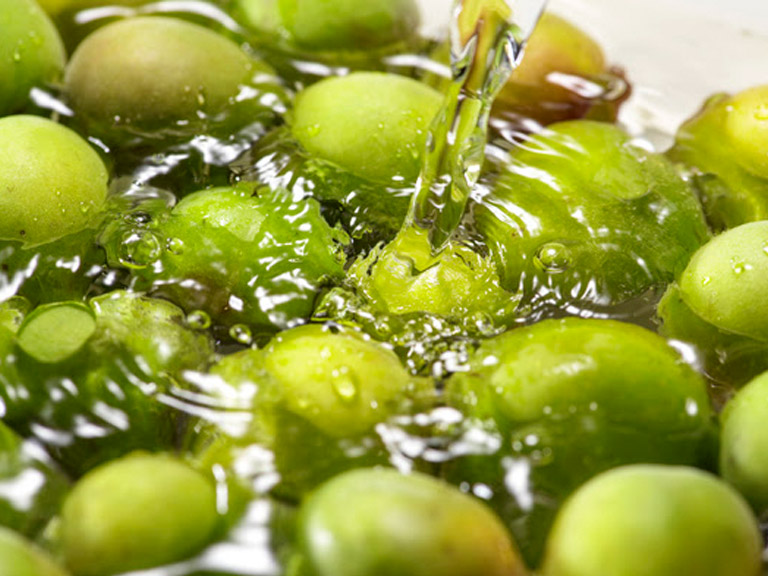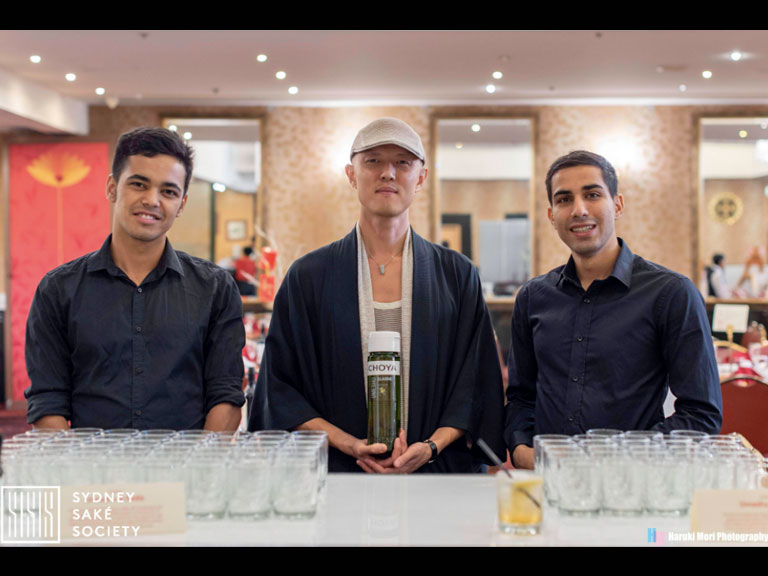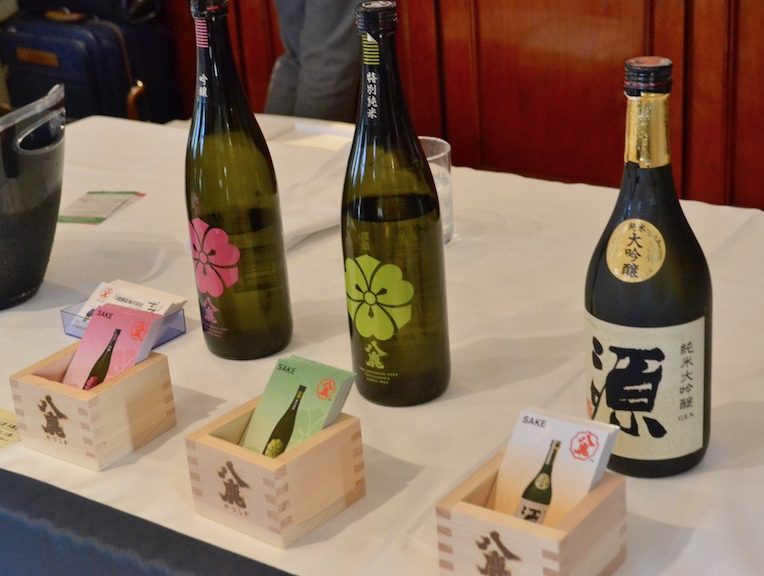With events few and far due to covid, we were naturally excited to attend the umeshu experience by Sakenet Australia, a family owned company specialising in boutique Japanese products. For those unfamiliar with their events, they always over deliver on value for money and high quality sake.
We started by being served a selection of local cakes and delightful charcuterie boards, while Rey presents a quick introduction about umeshu as well as general house keeping.
As Rey introduces us to the variety we will be trying and what makes them special; Taka began to serve the tokkuri (small pouring vessels) of Uzenshiraume Junmai Umeshu, an umeshe made with a more traditional approach.
Uzenshiraume: balance of sake and ume fruit; lighter with very balanced sweetness which lingers. Well balanced, lighter umeshu with little acidity.
They explain that the difference in using junmai sake results in a more full bodied flavour compared to more modern umeshu made with basic spirits, and as sake’s flavour changes with temprature; we try the same umeshu served warm to highlight the flavour differences (a common theme in the world of sake).
Warm: much more acidic, sugar coated sour apricots. The flavour is increased but it’s less balanced.
At this point the room recieves a few questions from the audience about the history of umeshu which Rey explains (A common homemade liqueur similar to lemoncello in Italy) including the common belief of some Japanese people that you can’t make umeshu with sake because the alcohol is too low however select premium producers balance the low abv with fruit variety, masceration techniques and time which as we just tried ends up with an incredible umeshu.
Next up we try a couple of umeshu in quick succession starting with the Morinokura Shiso Umeshu, made with red shiso and served at room temperature.
Morinokura Shiso Umeshu: light and clean but with a lot of flavour; it’s a balance of a savoury herb (try as I might I can’t think of a comparison for red shiso), apricot/cherry plum flavour and a gentle finish. Very Light, flavourful and complex.
Taking a turn to citrus based liqueurs; we are starting with more varieties from the newly imported Tenon, a brewery established in 1871 with a small yearly output of 86,000L.
Tenon Lemon: smells like homemade lemonade, (lemon juice and sugar), palate is refreshing, some bitter lemon rind and plenty of fresh lemon flavour. Would be good over ice.
Tenon Itonami umeshu: for myself I found this umeshu quite sour with some astringency, however an umeshu for this style would make a spectacular umeshu spirits.
It would be a lie to say the item I was most looking forward to wasn’t the yuzushu. In my completely biased opinion, yuzu -an asian citrus with a flavour combining lemon, mandarin and grapefruit; is one of the most refreshing fruits and a great yuzushu over ice being a personal favourite drink.
With junmai sake based yuzushu a rarity in Australia and the few avilable being of outstanding quality, the new Toyonoaki import had an incredibly high bar to reach.
Toyonoaki junmai yuzushu: nose is the unmistakable fresh yuzu smell; refreshing, initial sweetness gives to a refreshing yuzu acitity and ends on a gentle but lingering sour note. (thankfully I was thrilled with the quality, it’s an excellent yuzushu)
After that delightful palate cleanser we are back with some more intense umeshu:
Hakuin-masamune sappari (balanced refreshing) umeshu: a deep, rich and fruity smell, undisputedly ume (rich sour apricot like); palate is sour apricots and plums, slight astringency (think slightly green plum or apricot skin) on the finish; refreshing.
Suiryu junmai kimoto umeshu: nose is honey. sweet, lots of honey flavour; the flavour is strongly similar to a fortified wine. The finish does carry through the fruity flavour. Would be interesting warm.
As if they read my mind on the sweetness and heating suggestion Taka brings out the Suiryu umeshu mixed with Suiryu nigori sake served warm. The result is much nicer with a better balance of fruit to sweetness.
Lastly we get to try the special Sakenet homemade lovingly titled “Reys Special umeshu”: made with green cherry plums (known as Janerik in India or goje sabzz in Iran); a highlight, great depth and fruitiness, it encourages everyone to try making it at home.
As always Sakenet delivers an excellent events and we loved Rey’s umeshu so much we pestered him for the recipe (listed below with his permission).
Ingredients:
- 1.8 L Junmai Kimoto Genshu (his particular one was 3 years old)
- 1kg of Sour cherry plums (if unavailable, feel free to try your favourite fruit)
- 800g sugar
Method:
“I washed the fruit, remove the stems, and stab with a fork. Then I put everything in a glass jar w/ water lock and leave.” -Rey
Kanpai,
Daniel





